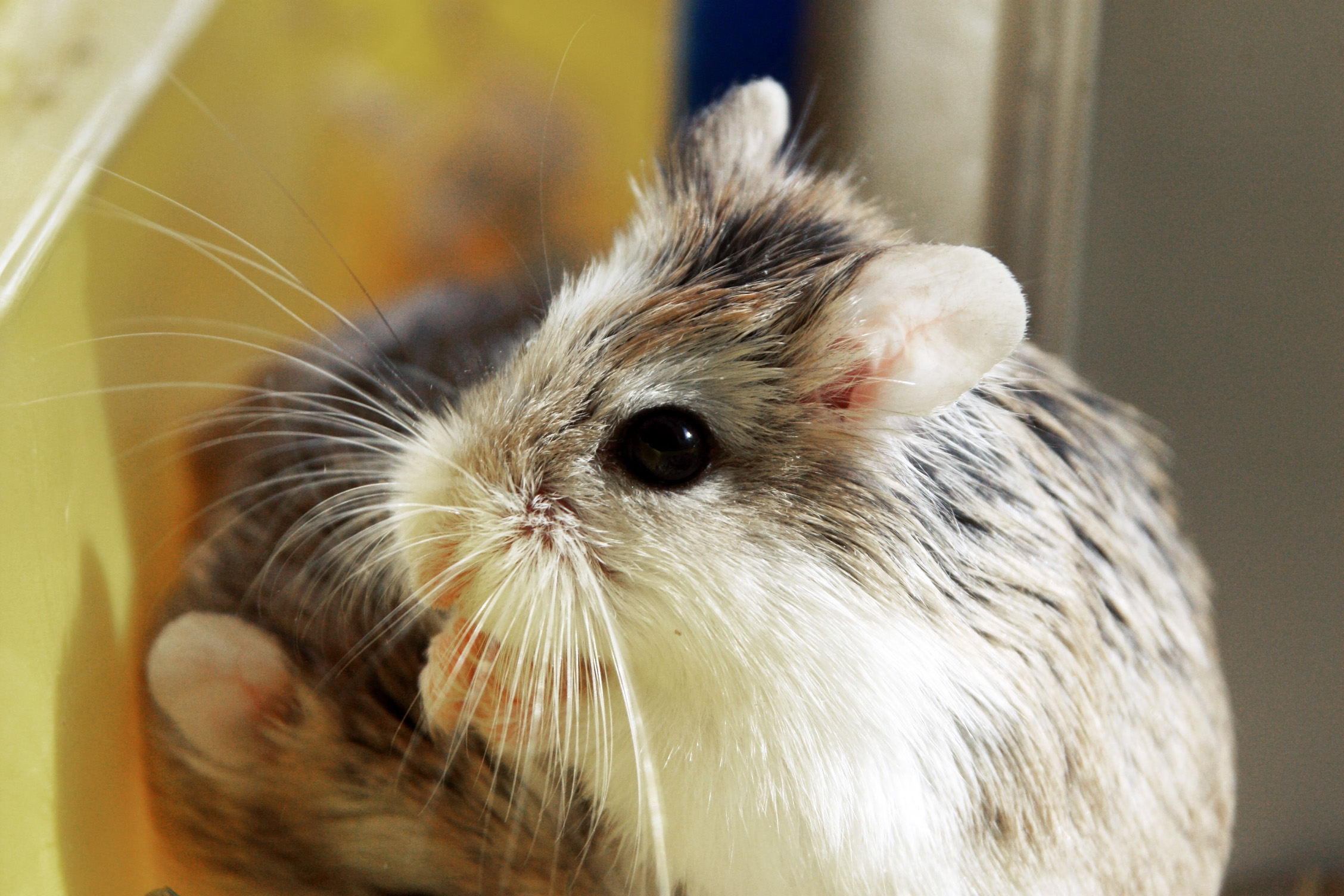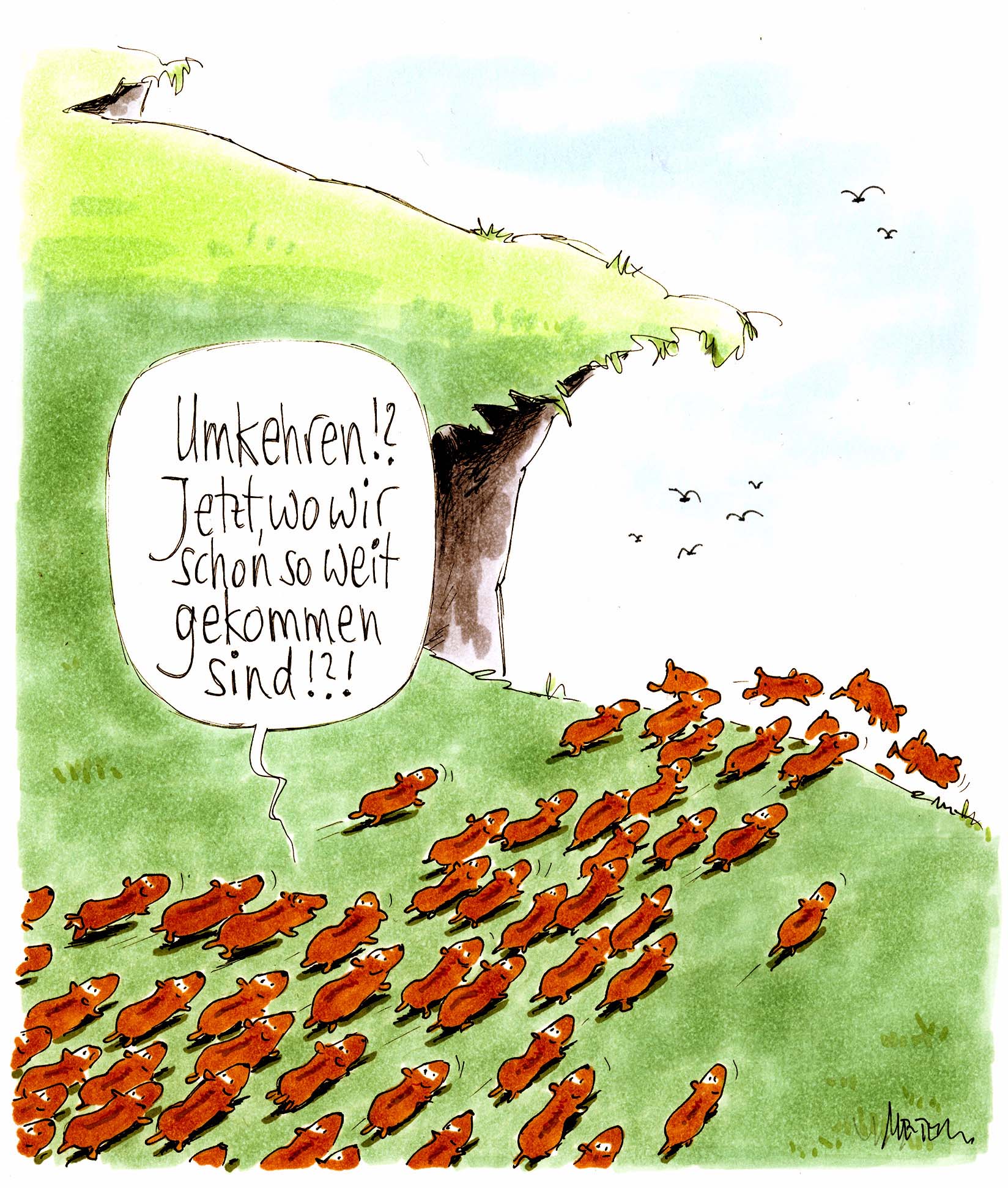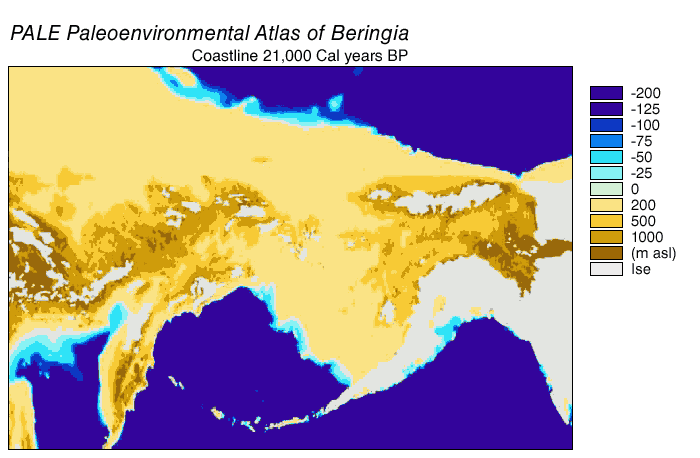|
Arvicolinae
The Arvicolinae are a subfamily of rodents that includes the voles, lemmings, and muskrats. They are most closely related to the other subfamilies in the Cricetidae (comprising the hamsters and New World rats and mice). Some authorities place the subfamily Arvicolinae in the family Muridae along with all other members of the superfamily Muroidea. Some refer to the subfamily as the Microtinae (yielding the adjective "microtine") or rank the taxon as a full family, the Arvicolidae. The Arvicolinae are the most populous group of Rodentia in the Northern Hemisphere. They often are found in fossil occlusions of bones cached by past predators such as owls and other birds of prey. Fossils of this group are often used for biostratigraphic dating of paleontological and archeological sites in North America and Europe. Description The most convenient distinguishing feature of the Arvicolinae is the nature of their molar teeth, which have prismatic cusps in the shape of alternat ... [...More Info...] [...Related Items...] OR: [Wikipedia] [Google] [Baidu] |
Cricetidae
The Cricetidae are a family of rodents in the large and complex superfamily Muroidea. It includes true hamsters, voles, lemmings, muskrats, and New World rats and mice. At over 870 species, it is either the largest or second-largest family of mammals, and has members throughout the Americas, Europe and Asia. Characteristics The cricetids are small mammals, ranging from just in length and in weight in the New World pygmy mouse up to and in the muskrat. The length of their tails varies greatly in relation to their bodies, and they may be either furred or sparsely haired. The fur of most species is brownish in colour, often with a white underbelly, but many other patterns exist, especially in the cricetine and arvicoline subfamilies. Like the Old World mice, cricetids are adapted to a wide range of habitats, from the high Arctic to tropical rainforests and hot deserts. Some are arboreal, with long balancing tails and other adaptations for climbing, while others ar ... [...More Info...] [...Related Items...] OR: [Wikipedia] [Google] [Baidu] |
Lemming
A lemming is a small rodent, usually found in or near the Arctic in tundra biomes. Lemmings form the subfamily Arvicolinae (also known as Microtinae) together with voles and muskrats, which form part of the superfamily Muroidea, which also includes rats, mice, hamsters and gerbils. A longstanding myth holds that they exhibit herd mentality and jump off cliffs, committing mass suicide. Description and habitat Lemmings measure around in length and weigh around . Lemmings are quite rounded in shape, with brown and black, long, soft fur. They have a very short tail, a stubby, hairy snout, short legs and small ears. They have a flattened claw on the first digit of their front feet, which helps them to dig in the snow. They are herbivorous, feeding mostly on mosses and grasses. They also forage through the snow surface to find berries, leaves, shoots, roots, bulbs, and lichens. Lemmings choose their preferred dietary vegetation disproportionately to its occurrence in their habi ... [...More Info...] [...Related Items...] OR: [Wikipedia] [Google] [Baidu] |
Vole
Voles are small rodents that are relatives of lemmings and hamsters, but with a stouter body; a longer, hairy tail; a slightly rounder head; smaller eyes and ears; and differently formed molars (high-crowned with angular cusps instead of low-crowned with rounded cusps). They are sometimes known as meadow mice or field mice. Vole species form the subfamily Arvicolinae with the lemmings and the muskrats. There are approximately 155 different vole species. Description Voles are small rodents that grow to , depending on the species. Females can have five to ten litters per year, though with an average lifespan of three months and requiring one month to adulthood, two litters is the norm. Gestation lasts for three weeks and the young voles reach sexual maturity in a month. As a result of this biological exponential growth, vole populations can grow very large within a short time. One mating pair can produce 100 offspring every year. Voles outwardly resemble several other ... [...More Info...] [...Related Items...] OR: [Wikipedia] [Google] [Baidu] |
Muroidea
The Muroidea are a large Taxonomic rank, superfamily of rodents, including mice, rats, voles, hamsters, lemmings, Gerbillinae, gerbils, and many other relatives. Although the Muroidea originated in Eurasia, they occupy a vast variety of habitat (ecology), habitats on every continent except Antarctica. Some authorities have placed all members of this group into a single family, Muridae, due to difficulties in determining how the subfamily, subfamilies are related to one another. Many of the families within the Muroidea superfamily have more variations between the families than between the different clades. A possible explanation for the variations in rodents is because of the location of these rodents; these changes could have been due to radiation or the overall environment they migrated to or originated in. The following Taxonomy (biology), taxonomy is based on recent well-supported molecular phylogeny, molecular phylogenies. The muroids are classified in six family (biology), f ... [...More Info...] [...Related Items...] OR: [Wikipedia] [Google] [Baidu] |
Muskrat
The muskrat or common muskrat (''Ondatra zibethicus'') is a medium-sized semiaquatic rodent native to North America and an introduced species in parts of Europe, Asia, and South America. The muskrat is found in wetlands over various climates and habitats. It has crucial effects on the ecology of wetlands, and is a resource of food and fur for humans. Adult muskrats weigh , with a body length (excluding the tail) of . They are covered with short, thick fur of medium to dark brown color. Their long tails, covered with scales rather than hair, are laterally compressed and generate a small amount of thrust, with their webbed hind feet being the main means of Aquatic locomotion, propulsion, and the unique tail mainly important in directional stability. Muskrats spend most of their time in the water and can swim underwater for 12 to 17 minutes. They live in families of a male and female pair and their young. They build nests to protect themselves from the cold and predators, often ... [...More Info...] [...Related Items...] OR: [Wikipedia] [Google] [Baidu] |
Hyperacrius
''Hyperacrius'' is a genus of rodent in the family Cricetidae. It contains the following species: * True's vole True's vole (''Hyperacrius fertilis'') is a species of rodent in the family Cricetidae. It is found in India and Pakistan Pakistan, officially the Islamic Republic of Pakistan, is a country in South Asia. It is the List of countries and de ... (''Hyperacrius fertilis'') * Murree vole (''Hyperacrius wynnei'') References Rodent genera Taxa named by Gerrit Smith Miller Jr. Taxonomy articles created by Polbot {{Arvicolinae-stub ... [...More Info...] [...Related Items...] OR: [Wikipedia] [Google] [Baidu] |
Ellobius
''Ellobius'' is a genus of rodents in the family Cricetidae. It contains two ('' E. talpinus'' and '' E. tancrei'') of the handful of examples of mammal species that have lost the Y chromosome The Y chromosome is one of two sex chromosomes in therian mammals and other organisms. Along with the X chromosome, it is part of the XY sex-determination system, in which the Y is the sex-determining chromosome because the presence of the .... The genus has the following species: * Alai mole vole (''Ellobius alaicus'') * Northern mole vole (''Ellobius talpinus'') * Zaisan mole vole (''Ellobius tancrei'') Two members of this genus were moved to the genus '' Bramus'': * Southern mole vole (''Bramus fuscocapillus'') * Transcaucasian mole vole (''Bramus lutescens'') See also *'' Tokudaia'' another mammal genus that has lost the Y-chromosome References Rodent genera Taxa named by Gotthelf Fischer von Waldheim Taxonomy articles created by Polbot {{Arvicolinae-s ... [...More Info...] [...Related Items...] OR: [Wikipedia] [Google] [Baidu] |
New World Rats And Mice
The New World rats and mice are a group of related rodents found in North and South America. They are extremely diverse in appearance and ecology, ranging from the tiny '' Baiomys'' to the large '' Kunsia''. They represent one of the few examples of muroid rodents (along with the voles) in North America, and the only example of muroid rodents to have made it into South America. The New World rats and mice are often considered part of a single subfamily, Sigmodontinae, but the recent trend among muroid taxonomists is to recognize three separate subfamilies. This strategy better represents the extreme diversity of species numbers and ecological types. Some molecular phylogenetic studies have suggested that the New World rats and mice are not a monophyletic group, but this is yet to be confirmed. Their closest relatives are clearly the hamsters and voles. The New World rats and mice are divided into 3 subfamilies, 12 tribes, and 84 genera. Classification *Family Cricetida ... [...More Info...] [...Related Items...] OR: [Wikipedia] [Google] [Baidu] |
Meadow Vole
The eastern meadow vole (''Microtus pennsylvanicus''), sometimes called the field mouse or meadow mouse, is a North American vole found in eastern Canada and the United States. Its range extends farther south along the Atlantic coast. The western meadow vole, Florida salt marsh vole, and beach vole were formerly considered regional variants or subspecies of ''M. pennsylvanicus'', but have all since been designated as distinct species. The eastern meadow vole is active year-round, usually at night. It also digs burrows, where it stores food for the winter and females give birth to their young. Although these animals tend to live close together, they are aggressive towards one another. This is particularly evident in males during the breeding season. They can cause damage to fruit trees, garden plants, and commercial grain crops. Taxonomy The species was formerly grouped with the western meadow vole (''M. drummondii'') and the Florida salt marsh vole (''M. dukecampbelli'') ... [...More Info...] [...Related Items...] OR: [Wikipedia] [Google] [Baidu] |
Molar (tooth)
The molars or molar teeth are large, flat teeth at the back of the mouth. They are more developed in mammals. They are used primarily to grind food during chewing. The name ''molar'' derives from Latin, ''molaris dens'', meaning "millstone tooth", from ''mola'', millstone and ''dens'', tooth. Molars show a great deal of diversity in size and shape across the mammal groups. The third molar of humans is sometimes vestigial. Human anatomy In humans, the molar teeth have either four or five cusps. Adult humans have 12 molars, in four groups of three at the back of the mouth. The third, rearmost molar in each group is called a wisdom tooth. It is the last tooth to appear, breaking through the front of the gum at about the age of 20, although this varies among individuals and populations, and in many cases the tooth is missing. The human mouth contains upper (maxillary) and lower (mandibular) molars. They are: maxillary first molar, maxillary second molar, maxillary third mol ... [...More Info...] [...Related Items...] OR: [Wikipedia] [Google] [Baidu] |
New World
The term "New World" is used to describe the majority of lands of Earth's Western Hemisphere, particularly the Americas, and sometimes Oceania."America." ''The Oxford Companion to the English Language'' (). McArthur, Tom, ed., 1992. New York: Oxford University Press, p. 33: "[16c: from the feminine of ''Americus'', the Latinized first name of the explorer Amerigo Vespucci (1454–1512). The name ''America'' first appeared on a map in 1507 by the German cartographer Martin Waldseemüller, referring to the area now called Brazil]. Since the 16th century, the term "New World" has been used to describe the Western Hemisphere, often referred to as the Americas. Since the 18th century, it has come to represent the United States, which was initially colonial British America until it established independence following the American Revolutionary War. The second sense is now primary in English: ... However, the term is open to uncertainties: ..." The term arose in the early 16th ... [...More Info...] [...Related Items...] OR: [Wikipedia] [Google] [Baidu] |
Beringia
Beringia is defined today as the land and maritime area bounded on the west by the Lena River in Russia; on the east by the Mackenzie River in Canada; on the north by 70th parallel north, 72° north latitude in the Chukchi Sea; and on the south by the tip of the Kamchatka Peninsula. It includes the Chukchi Sea, the Bering Sea, the Bering Strait, the Chukchi Peninsula, Chukchi and Kamchatka peninsulas in Russia as well as Alaska in the United States and Yukon in Canada. The area includes land lying on the North American Plate and Siberian land east of the Chersky Range. At various times, it formed a land bridge referred to as the Bering land bridge, that was up to wide at its greatest extent and which covered an area as large as British Columbia and Alberta together, totaling about , allowing biological dispersal to occur between Asia and North America. Today, the only land that is visible from the central part of the Bering land bridge are the Diomede Islands, the Pribilof Isla ... [...More Info...] [...Related Items...] OR: [Wikipedia] [Google] [Baidu] |





